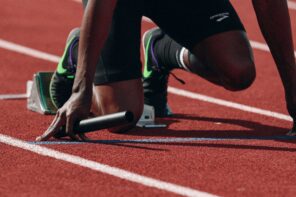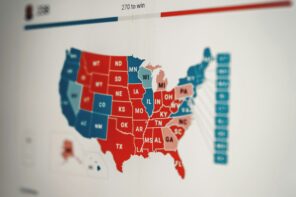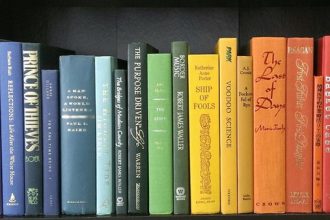The Olympics are more than an athletic competition. They are a symbol of unity, a sign that we can put aside our differences and come together as a global community to recognize the natural abilities of the human body. The Olympics are a celebration of humanity, and for the first time since 1984, we will not be there. But unlike the politically motivated boycotts in 1980 and 1984, the COVID-19 pandemic has shut down the Olympics for everyone. And unlike 1980 and 1984, the show will go on with everyone involved, except that it will be a year late. In July 2021, the world will come together in Tokyo to compete in the 2020 Olympics.
But what about the athletes? Team Canada has already selected over half of the athletes that will compete in Tokyo, so what do they do with this extra year? How will they prepare? How will it impact their performance? What will the COVID Olympics look like? Over the coming weeks this column will explore how Team Canada is preparing for 2021, and what this year-long layoff means for them.
Young guns Murray, Barrett, and Gilgeous-Alexander have all made verbal commitments to Canada for both the Olympics, and the preceding qualifying tournament. There are more NBA players from Canada than from any other single country besides the United States. In 2020 there we 21 Canadians signed to an NBA team or G-League Affiliate. The average age of these players was 25. Team Canada is more talented and younger than ever before. If Team Canada can secure commitments from this golden generation, they can be a force at the Olympics. But with all this talent around, what would the ideal roster be?The Summer Olympics have never been the focus for Team Canada. In the winter, among the ice and snow, Canadian athletes are on home turf. But this year the men’s basketball team has a chance to turn that perception on its head and win big against their southern neighbour. Historically, the men’s basketball program has struggled to secure commitments from its best players. At the 2019 FIBA World Cup, Team Canada was hampered by a flurry of late dropouts. Most of the NBA players on the roster trained with the team, but Jamal Murray, RJ Barret, Shai Gilgeous-Alexander, and others such as Dillion Brooks and Brandon Clarke did not make themselves available for the final roster. Even Nik Stauskas, who was playing professionally in China where the tournament was being held, dropped out before the final roster was set. However, all of that could change next year.
This team is led by its strong guard play. Murray and Gilgeous-Alexander are two of the most talented players on this roster. Both can drive, create, and shoot. Both are effective with the ball in their hands, but have experience playing alongside a more ball dominant point-guard (or point-center, in the case of Murray’s teammate Nikola Jokic). At 6’6 with a 7 foot wingspan, Gilgeous-Alexander also has the size and length to defend both guards and wings. Cory Joseph is a plus shooter, and at 29 years old with nine years of NBA experience, he brings a calming veteran presence to Canada’s young pool of guards. RJ Barret has as much potential as any player on the roster but is more of a prospect than a contributor. He is a versatile scorer and has flashed serious potential as a secondary creator. However, his impact at Tokyo could be limited by inefficient shooting and shaky defense. Lugentz Dort is in a similar position. Although he has a much lower ceiling than Barrett, he is already one of the better defenders on the roster, giving him significant positional versatility. If Dort becomes a more consistent shooter, he has a future as an elite 3-D wing.
Canada also has a deep and talented collection of bigs. Dwight Powell, Tristan Thompson, and Chris “Trés Boucher” Boucher are more traditional centers. All three are strong rebounders, and Powell and Thomson are both capable rim runners or rollers in the pick and roll. Boucher is perhaps the weakest player overall at the position, but has a reputation as a fearsome shot blocker with a developing three point shot. Olynyk and Clarke both fit the definition of a complete modern big. They are both able to space the floor and roll to the basket, rebound, defend the paint, and occasionally switch on the perimeter. Clarke is the shortest of these players at 6’8, but shows the highest defensive potential, and could eventually overtake Boucher as the top shot blocker on the team. None of these players are among the best in the world at any one of these skills, but their versatility offers Team Canada the ability to mix and match to counter many opposing rosters and playstyles. Powell and Olynyk earn the starting power-forward and center positions because they are the most individually versatile players at those positions, and because they are at the top of their games, competing at the highest levels of the NBA — Olynyk with the 2020 Eastern Conference Champions the Miami Heat, and Powell with the resurgent Dallas Mavericks.
Relative to its plethora of talented guards and bigs, Team Canada is light on wings. Although several of the guards mentioned above are comfortable defending opposing wing players, they are either too short to match up with the bigger, stronger wings (6’3 Lu Dort), or they are better suited to playing as a guard on offense (Gilgeous-Alexander and Barrett). Andrew Wiggin is known primarily as a draft bust in NBA circles. However, he is a bust relative to his draft position, first overall in 2014. Wiggins is a capable, although inefficient, scorer. He has the requisite height and strength to be a plus defender, but his intensity fluctuates. Dillon Brooks has flashed potential with the young Memphis Grizzlies, but he is only an okay shooter and is at his best when he can play on ball and drive to the hoop. Furthermore, Brooks is heavy on potential, but has yet to compete at a high level, unlike some players on the roster younger than him. Both Wiggins and Brooks will benefit from playing next to talented guards who can create and space the floor. Wiggins especially has struggled with being the best player on a team; playing next to top tier guards could unlock some of his hidden potential.
Canada has the talent to be an international powerhouse, but only if that talent commits to representing the red and white. The next chance that Canada has to prove that can turn talent into success is at the 2020 Olympics. But there is a major problem: the men’s team has yet to qualify. In order to go to Tokyo, Canada has to win one of the four wild card spots. Twenty-four teams were split into four qualifying tournaments, and the winner of each tournament qualifies for the Olympics. Canada will have to win out over China, Czechia, Greece, Turkey, and Uruguay. China is a historically dominant program, although one currently facing decline. Greece is led by back to back MVP Giannis Antetokounmpo. Turkey is ranked 15th globally and is led by multiple NBA players. Czechia is a recently emergent program and is led by Chicago Bulls point guard Tomas Satoransky. With its strongest roster Canada is the prohibitive favorite of the group, and benefits from the Tournament being hosted in Victoria, BC. However, the qualifying tournaments have also been delayed by COVID, and could now take place during the NBA season. Historically, the NBA and its constituent franchises have taken a harsh line against letting players go for international tournaments. Even Team USA has had to play smaller tournaments and friendlies with backups and college players. Because of a year long layoff, Canada’s rising golden generation might have to weigh their commitment to the program against their NBA careers, with Olympic glory on the line.









